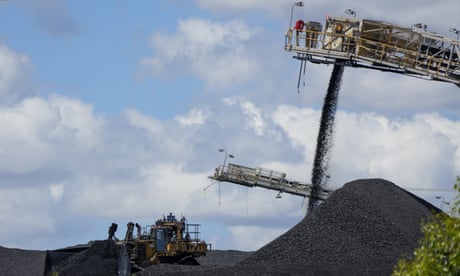Extract from The Guardian
Intended as a pollution cutting ‘stick’, government is now ‘trying to paint it orange and pretend it’s a carrot’, says one expert.

Former federal environment minister Greg Hunt introduced the Abbott government’s direct action policy, including the safeguard mechanism.
Cue Direct Action, with its Emissions Reduction Fund that has so far earmarked $2.55b to pay polluters not to pollute or to support reforestation or other carbon curbing projects.
The other main tool was the promisingly named Safeguard Mechanism. Hunt was happy to talk up the scheme as a way to force companies to cut emissions.
This mechanism is worth a close look at because energy, industry and emissions reduction minister, Angus Taylor, on Wednesday preemptively attacked Labor, should the opposition make the foolhardy move of implementing government policy, introducing a backdoor carbon price in the process.
‘‘The safeguard mechanism was never meant to be a tool to force businesses to reduce their emissions – which is a carbon tax by stealth,’’ Taylor was reported in today’s Australian Financial Review as saying.
What is the Safeguard Mechanism?
First up, it’s shape-shifted many times, making it less likely to safeguard anything.
The scheme was originally designed explicitly to prevent emissions rising from big polluters thereby undoing the work of the billions of dollars being forked out by taxpayers via the Emissions Reduction Fund.
Emitters such as miners, oil and gas companies, and manufacturers were covered by this mechanism, with a facility pollution threshold set at 100,000 tonnes a year of carbon dioxide-equivalent (CO2-e).
A limit, also known as a baseline, was applied to such facilities. If owners exceeded that cap, they were supposed to buy carbon credits to offset those extra emissions or pay a penalty.
Sounds almost like a cap and trade market that identifies a carbon price.
However, as Guardian Australia has reported here and here, polluters have largely dodged paying a penalty, and big polluters’ emissions have kept rising.
Why has it isn’t working?
Change the baseline and you can neuter the mechanism.

As noted by an adviser to The Australia Institute and former industry department staffer, Polly Hemming, the initial baselines were set according to historical emissions.
Now, though, instead of absolute tonnes of CO2-e, updated methods have baselines set according to emissions intensity, such as how much pollution resulted per tonne of coal dug up at a mine.
These baselines now increase or fall in proportion to expected production, she says.
Tennant Reed, who runs climate, energy and environment policy for the Australian Industry Group, last year summed up progress so far: “If it never has to do something to actually reduce emissions it will have been a waste of time for everyone involved,” he says.
Could it get worse?
Quite possibly.
The Morrison government set aside almost $280m in its 2021 budget to implement recommended changes after a review by Grant King, previously the head of the Business Council of Australia (BCA), (remember this organisation, we’ll come back to them.)
These
included the creation of rewards if emissions intensity fell below
existing baselines. Large emitters would get “Safeguard Mechanism
Credits” (SMC) that they could then trade if pollution sank below agreed
limits.
“This government legislated the stick of the safeguard
mechanism,” Hemming says. “Now they’re trying to paint it orange and
pretend it’s a carrot.”
Hemming argues the new type of credit won’t be treated as the equivalent of existing Australian Carbon Credit Units, setting up the prospect of a two-tiered market.
“We
are throwing so much public money at ‘incentivising’ emissions
reduction by big polluters,” she said. “It’s not working and it’s
punishing the businesses who genuinely have invested in serious
abatement.”
The only upside is that the SMC could form the basis
of a cap and trade market that Labor could adopt if it wins office. This
prospect may be why Taylor is on the attack. (His Labor counterpart was
approached for comment.)
Does anybody like the Safeguard Mechanism?
The BCA does, sort of.
The same group that famously attacked Labor’s 2019 election pledge of cutting 2005-level emissions 45% as “economy wrecking” now thinks 46-50% is doable.
The Morrison government is adamant it won’t be taking a target higher than 26-28% to the next elections. That’s despite signing up to the Glasgow Cop26 pact that requests nations lift that 2030 goal by next year. Labor is yet to decide on a near-term target.

The Safeguard Mechanism, the business lobby group now says, is just the tonic “to deliver a strong carbon investment signal”.
It calls for lowering the eligibility threshold so that entities emitting 25,000t CO2-e a year will be captured. Those baselines should be lowered “predictably and gradually over time”, with various exclusions, such as firms exposed to international rivals who may not face similar carbon restrictions.
But while it backs the application of the mechanism, the group’s first choice is a climate policy that most economists favour but major political parties won’t go near, noting: “an explicit, economy-wide carbon pricing mechanism is the Business Council’s preferred option”.
And so, we come full circle.
No comments:
Post a Comment